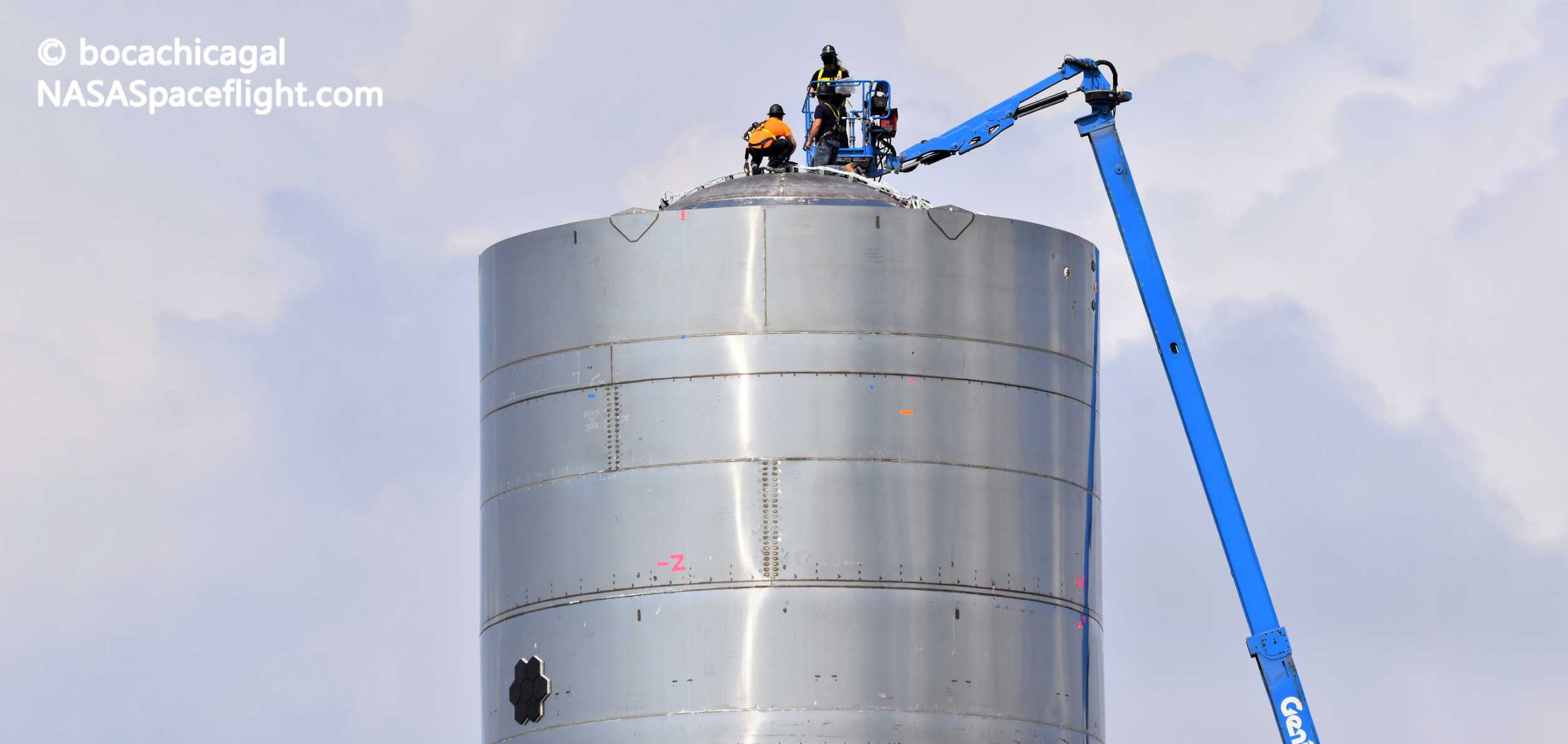

News
SpaceX fires up Starship rocket twice in 30 hours ahead of next big tests
SpaceX has successfully fired up a full-scale Starship rocket for the second time in barely 30 hours and removed the ship’s Raptor engine to perform an additional suite of “cryo testing”.
Around 7pm CDT on May 6th, SpaceX technicians began loading the fourth full-scale Starship with liquid oxygen and methane, filling up a large portion of its massive propellant tanks. Just the latest in a line of several tests involving wet dress rehearsals (WDR) completed in the days prior, this test would soon become exceptional. About an hour and a half after work began, Starship SN4’s lone Raptor engine ignited and burned for ~3 seconds, marking the first time in history a next-generation SpaceX rocket truly came alive with one of the engines designed to take it all the way to orbit.
In line with tests performed with Starhopper – a low-fidelity, subscale tested that flew twice with Raptor – last year, it would have been business as usual if SpaceX had called it a day and moved on to something else with Starship SN4. Instead, Starship performed another WDR and fired up its Raptor engine for a second time in just 30 hours after SpaceX teams inspected the rocket and cleared it for another round. It’s unknown why two back-to-back static fires were performed but, to be clear, every step Starship SN4 takes forward is a step into uncharted territory. Already, the ship’s next steps could come as soon as Friday, May 8th.
According to CEO Elon Musk, SpaceX’s second Starship SN4 static fire test was completed successfully and actually marked the operational debut of a critical aspect of the next-generation launch vehicle and spacecraft. Known as header tanks, Starship needs two smaller secondary propellant tanks to complement its main tanks, a need driven mainly by the challenges of landing such a large and mobile spacecraft. Smaller header tanks will also make it dramatically easier for SpaceX to insulate cryogenic propellant and ensure it remains liquid over long-duration cruises in space, but safe and reliable landings are a more pressing concern for these early prototypes.
During landing operations, the main benefits smaller header tanks offer are relative ease of pressurization (needed to safely feed Raptor engines) and a much lower risk of issues from sloshing, which can introduce bubbles and voids that can obliterate rocket engines if ingested. Impressively, per Musk, Starship SN4 completed its second static fire test using its internal liquid methane header tank – a sort of bubble attached to the bottom of the main methane tank dome.
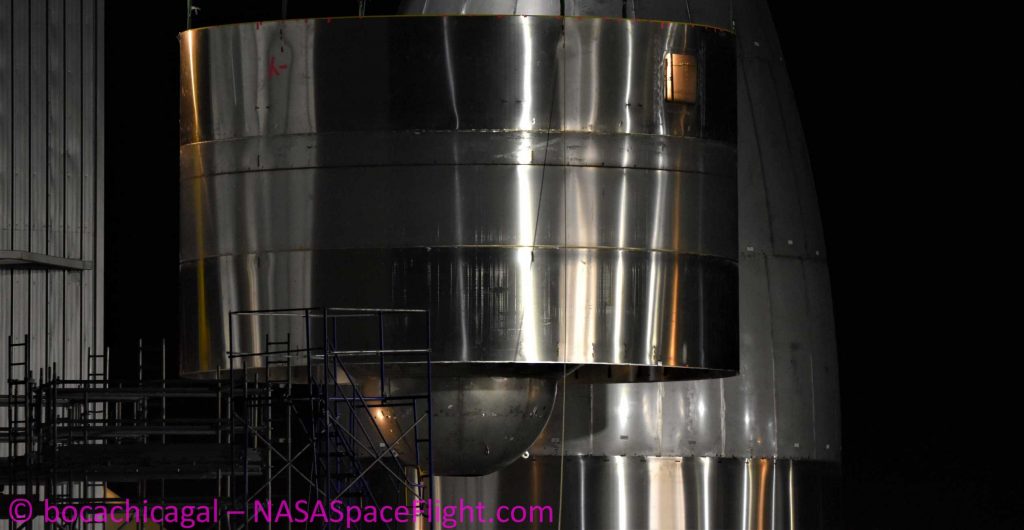
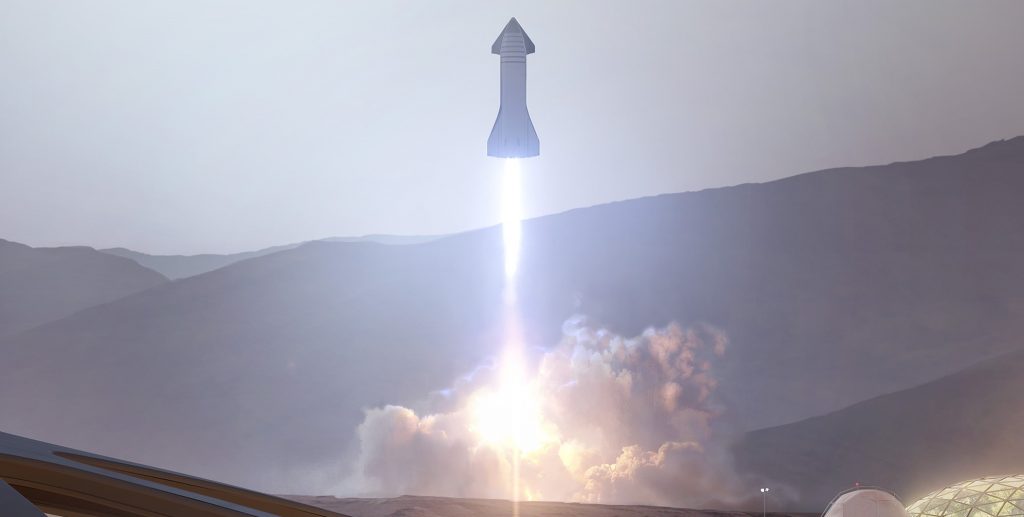
Starship’s liquid oxygen header tank is situated at the tip of the conical nose section, a part that all full-scale ships have been tested without thus far. However, the use of the fuel header tank on May 7th means that Starship SN4 already has a functional, plumbed header tank installed, verifying the partial functionality of a critical part of the next-generation launch vehicle. A second static fire will have also provided SpaceX a wealth of extra data about Raptor’s performance while installed on Starship, invaluable at such an early stage of integrated testing.
Two Starship static fires now under its belt, SpaceX removed SN4’s Raptor engine around 12 hours after its second test and returned it to storage at the company’s nearby factory facilities. According to public notices provided by Cameron County, Texas officials, SpaceX’s next Starship SN4 activity is expected to occur on May 8th with backup windows on the 9th and 10th and will involve “cryo testing”.
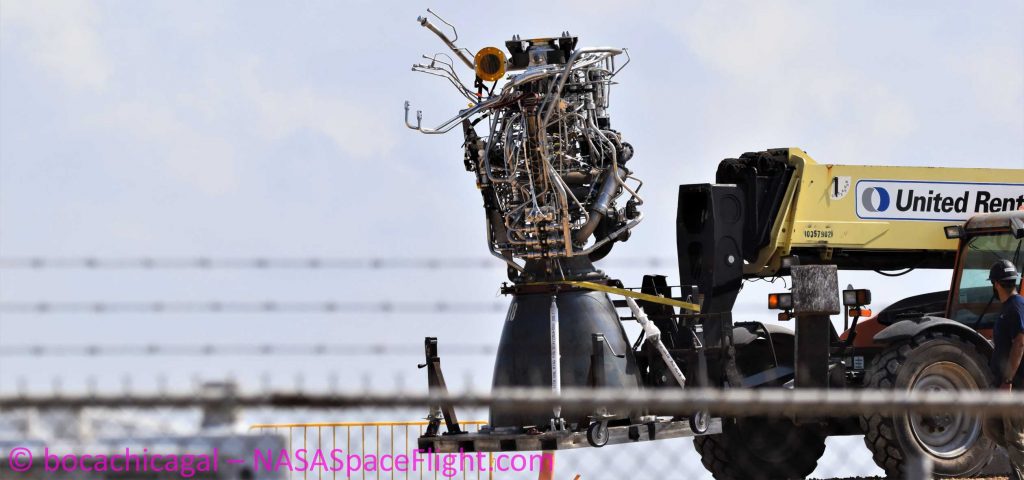
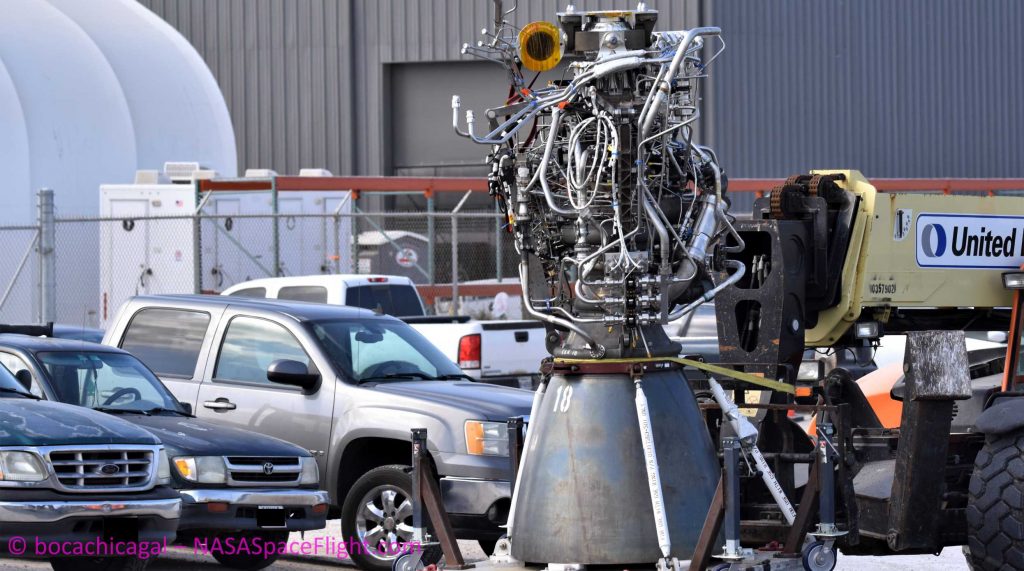
The most obvious conclusion is that SpaceX – having completed enough static fire testing to verify Starship SN4’s performance – now wants to really put the rocket through its paces with another cryogenic test. Completed on April 26th, the ship’s first cryogenic ‘proof’ test maxed out at around 4.9 bar (70 psi), enough for low-stress hop tests but well short of the sustained pressure needed for orbital spaceflight. While testing singular propellant tanks in the first few months of 2020, Musk revealed that SpaceX was targeting a minimum of 6 bar (~90 psi) for orbital Starship flights – ~8 bar (115 psi) with a 25% safety factor.

The company actually achieved 8.4 bar with one of its Starship test tanks, the same processes of which were used to build Starship SN4, but a full-scale ship has yet to demonstrate those pressures. Now, SpaceX already has a fifth full-scale prototype (Starship SN5) likely just a week or so away from pad readiness, meaning that Starship SN4’s potential destruction during pressure testing wouldn’t have a big impact on plans for a series of imminent flight tests. If SN4 survives pressure testing, it would likely have its Raptor engine reinstalled and move on to a 150m (500 ft) hop test.
News
Tesla cleared in Canada EV rebate investigation
Tesla has been cleared in an investigation into the company’s staggering number of EV rebate claims in Canada in January.

Canadian officials have cleared Tesla following an investigation into a large number of claims submitted to the country’s electric vehicle (EV) rebates earlier this year.
Transport Canada has ruled that there was no evidence of fraud after Tesla submitted 8,653 EV rebate claims for the country’s Incentives for Zero-Emission Vehicles (iZEV) program, as detailed in a report on Friday from The Globe and Mail. Despite the huge number of claims, Canadian authorities have found that the figure represented vehicles that had been delivered prior to the submission deadline for the program.
According to Transport Minister Chrystia Freeland, the claims “were determined to legitimately represent cars sold before January 12,” which was the final day for OEMs to submit these claims before the government suspended the program.
Upon initial reporting of the Tesla claims submitted in January, it was estimated that they were valued at around $43 million. In March, Freeland and Transport Canada opened the investigation into Tesla, noting that they would be freezing the rebate payments until the claims were found to be valid.
READ MORE ON ELECTRIC VEHICLES: EVs getting cleaner more quickly than expected in Europe: study
Huw Williams, Canadian Automobile Dealers Association Public Affairs Director, accepted the results of the investigation, while also questioning how Tesla knew to submit the claims that weekend, just before the program ran out.
“I think there’s a larger question as to how Tesla knew to run those through on that weekend,” Williams said. “It doesn’t appear to me that we have an investigation into any communication between Transport Canada and Tesla, between officials who may have shared information inappropriately.”
Tesla sales have been down in Canada for the first half of this year, amidst turmoil between the country and the Trump administration’s tariffs. Although Elon Musk has since stepped back from his role with the administration, a number of companies and officials in Canada were calling for a boycott of Tesla’s vehicles earlier this year, due in part to his association with Trump.
News
Tesla Semis to get 18 new Megachargers at this PepsiCo plant
PepsiCo is set to add more Tesla Semi Megachargers, this time at a facility in North Carolina.

Tesla partner PepsiCo is set to build new Semi charging stations at one of its manufacturing sites, as revealed in new permitting plans shared this week.
On Friday, Tesla charging station scout MarcoRP shared plans on X for 18 Semi Megacharging stalls at PepsiCo’s facility in Charlotte, North Carolina, coming as the latest update plans for the company’s increasingly electrified fleet. The stalls are set to be built side by side, along with three Tesla Megapack grid-scale battery systems.
The plans also note the faster charging speeds for the chargers, which can charge the Class 8 Semi at speeds of up to 1MW. Tesla says that the speed can charge the Semi back to roughly 70 percent in around 30 minutes.
You can see the site plans for the PepsiCo North Carolina Megacharger below.

Credit: PepsiCo (via MarcoRPi1 on X)

Credit: PepsiCo (via MarcoRPi1 on X)
READ MORE ON THE TESLA SEMI: Tesla to build Semi Megacharger station in Southern California
PepsiCo’s Tesla Semi fleet, other Megachargers, and initial tests and deliveries
PepsiCo was the first external customer to take delivery of Tesla’s Semis back in 2023, starting with just an initial order of 15. Since then, the company has continued to expand the fleet, recently taking delivery of an additional 50 units in California. The PepsiCo fleet was up to around 86 units as of last year, according to statements from Semi Senior Manager Dan Priestley.
Additionally, the company has similar Megachargers at its facilities in Modesto, Sacramento, and Fresno, California, and Tesla also submitted plans for approval to build 12 new Megacharging stalls in Los Angeles County.
Over the past couple of years, Tesla has also been delivering the electric Class 8 units to a number of other companies for pilot programs, and Priestley shared some results from PepsiCo’s initial Semi tests last year. Notably, the executive spoke with a handful of PepsiCo workers who said they really liked the Semi and wouldn’t plan on going back to diesel trucks.
The company is also nearing completion of a higher-volume Semi plant at its Gigafactory in Nevada, which is expected to eventually have an annual production capacity of 50,000 Semi units.
Tesla executive teases plan to further electrify supply chain
News
Tesla sales soar in Norway with new Model Y leading the charge
Tesla recorded a 54% year-over-year jump in new vehicle registrations in June.

Tesla is seeing strong momentum in Norway, with sales of the new Model Y helping the company maintain dominance in one of the world’s most electric vehicle-friendly markets.
Model Y upgrades and consumer preferences
According to the Norwegian Road Federation (OFV), Tesla recorded a 54% year-over-year jump in new vehicle registrations in June. The Model Y led the charge, posting a 115% increase compared to the same period last year. Tesla Norway’s growth was even more notable in May, with sales surging a whopping 213%, as noted in a CNBC report.
Christina Bu, secretary general of the Norwegian EV Association (NEVA), stated that Tesla’s strong market performance was partly due to the updated Model Y, which is really just a good car, period.
“I think it just has to do with the fact that they deliver a car which has quite a lot of value for money and is what Norwegians need. What Norwegians need, a large luggage space, all wheel drive, and a tow hitch, high ground clearance as well. In addition, quite good digital solutions which people have gotten used to, and also a charging network,” she said.
Tesla in Europe
Tesla’s success in Norway is supported by long-standing government incentives for EV adoption, including exemptions from VAT, road toll discounts, and access to bus lanes. Public and home charging infrastructure is also widely available, making the EV ownership experience in the country very convenient.
Tesla’s performance in Europe is still a mixed bag, with markets like Germany and France still seeing declines in recent months. In areas such as Norway, Spain, and Portugal, however, Tesla’s new car registrations are rising. Spain’s sales rose 61% and Portugal’s sales rose 7% last month. This suggests that regional demand may be stabilizing or rebounding in pockets of Europe.
-

 Elon Musk2 weeks ago
Elon Musk2 weeks agoTesla investors will be shocked by Jim Cramer’s latest assessment
-

 Elon Musk2 days ago
Elon Musk2 days agoxAI launches Grok 4 with new $300/month SuperGrok Heavy subscription
-

 Elon Musk4 days ago
Elon Musk4 days agoElon Musk confirms Grok 4 launch on July 9 with livestream event
-

 News1 week ago
News1 week agoTesla Model 3 ranks as the safest new car in Europe for 2025, per Euro NCAP tests
-

 Elon Musk2 weeks ago
Elon Musk2 weeks agoA Tesla just delivered itself to a customer autonomously, Elon Musk confirms
-

 Elon Musk1 week ago
Elon Musk1 week agoxAI’s Memphis data center receives air permit despite community criticism
-

 News2 weeks ago
News2 weeks agoXiaomi CEO congratulates Tesla on first FSD delivery: “We have to continue learning!”
-

 Investor's Corner2 weeks ago
Investor's Corner2 weeks agoTesla gets $475 price target from Benchmark amid initial Robotaxi rollout

















